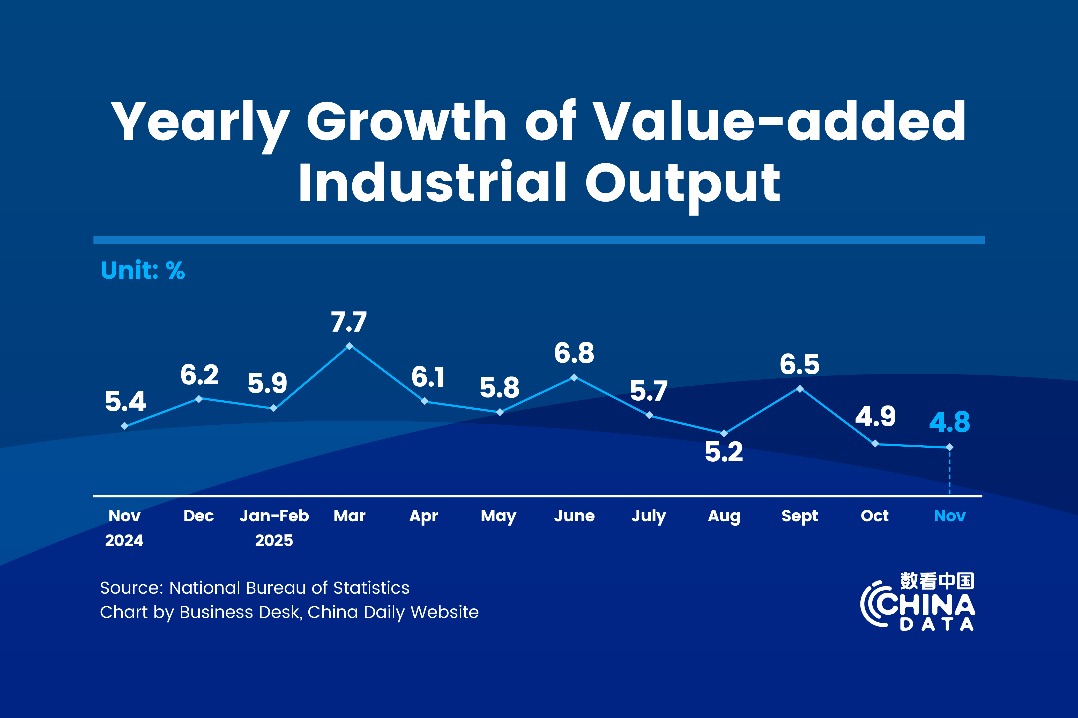RMB may stay stable; firms must be risk-neutral


The US dollar saw its ups and downs last year before ending on a strengthening note. Meanwhile, the renminbi managed to stay strong against that backdrop amid the stratospheric $675.9 billion trade surplus China secured in 2021.
But the situation is totally different this year. Data released by the General Administration of Customs on Aug 7 showed that China's trade surplus hit a record $101.3 billion in July, with the total trade surplus in the first seven months surging 61.6 percent year-on-year to over $482.3 billion. However, the renminbi's exchange rate against the US dollar fell drastically in late April, plunging to 7 on Thursday, the lowest level since August 2020. It seems that the positive correlation between trade surplus and renminbi appreciation is no longer the case.
It should be noted that trade surpluses can support a strong renminbi only under certain circumstances. First, the trade surplus should be large enough to do so. Second, the surplus should be able to transform into settlement and sales easily. Third, it should be taken into consideration to what extent the surplus in foreign exchange settlement and sales is hedged by the deficit in foreign exchange settlement and sales in other channels.
Trade surpluses can help China better prepare for capital flow volatility. But it should be noted that trade surpluses are accumulated step by step while the pressure of capital outflow can be instantly released. Such mismatches may put the renminbi under pressure.
Given the astronomical trade surplus China enjoyed in the first seven months, its scale is already sufficient enough to allow more attention to be paid to the other two issues.
A trade surplus registered with Customs can be translated into surplus in foreign exchange settlement and sales after going through two steps-the bank's foreign-related receipts and payments and the settlement and sales of foreign exchange on behalf of the bank's clients.
As has been seen over the past few months, and even during the past five years, there has been little loss seen in banks' foreign-related receipts and payments.
But the rate of settlement and sales of foreign exchange on behalf of bank clients stood at 55.6 percent on average in the first seven months, down 1.9 percentage points year-on-year, or 0.6 percent from the average number reported from 2017 to 2021.
Supply and demand for foreign exchange in other channels should also be checked. Settlement and sales of foreign exchange from trade in goods on behalf of bank clients totaled $163.4 billion from January to July. Up to 68.9 percent of this amount was offset by the deficit in trade on behalf of customers, income and current transfers, securities investment, banks' own foreign exchange settlement and sales, as well as the decline in the net foreign exchange settlement exposure to foreign exchange derivatives, all of which totaled $112.6 billion.
But during the same period of 2021, foreign exchange settlement and sales from trade in goods saw a surplus of $179.7 billion, and the total deficit of the aforementioned items was $57.5 billion, offsetting only 32 percent.
The renminbi exchange rate has been topsy-turvy this year. It remained strong in the first two months and peaked at 6.3 in early March to be labeled as a "safe-haven currency". But the situation turned volatile in late April, with the currency declining to 6.8 on May 16-down 7.2 percent from the previous peak.
Although the downtrend paused temporarily in mid-July, the renminbi started to weaken again a month later. During the 10 trading days between Aug 15 and 26, the renminbi's midprice and closing price shed 1.6 percent and 1.9 percent, respectively.
The latest adjustment of the renminbi exchange rate exhibits the same logic seen in late April. The bullish US dollar is one trigger. Expectations of further US Federal Reserve tightening combined with rising risks of stagflation in the eurozone have pushed the greenback to a 20-year high. The US currency surged 3 percent between Aug 15 and 26, and it has altogether gained 13.4 percent so far this year. On the other hand, the renminbi has dropped 0.3 percent since the beginning of the year. In this sense, a strong US dollar rather than a weak renminbi is the major cause of the latter's recent adjustment.
The obstacles in China's economic recovery comprise a second cause for the renminbi's downward pressure. Financial and economic data in July were weaker than market expectations, reflecting the impact from COVID-19 resurgences and extreme heat hitting southern parts of China.
The inverted China-US interest rate spread has been deepening, which is another reason for the renminbi's adjustment. The average China-US 10-year bond yield spread came at-35 basis points between Aug 15 and 26, with the inverted gap further expanded by 945.2 percent if compared to the level recorded between Aug 1 and 12.
Market expectations are capricious. At the beginning of the year, some firmly believed that the renminbi would be so strong this year that its exchange rate against the US dollar might break below 6.But a growing number of market watchers now assume the renminbi will keep falling.
It seems that there are lots of negative messages to exert an impact big enough on the renminbi's future performance. They include COVID-19 resurgences, disposal of financial risks, slowdown in economic recovery, aggressive tightening overseas, global economic stagflation, international financial volatility and geopolitical tensions.
Of course, there is positive news, including weakened expectations of tightening in overseas markets. In the domestic market, we can expect further economic stabilizing policies, relaxed industry regulation and optimized COVID-19 control measures.
The future performance of the renminbi will not be simply defined by the number of negative or positive elements, but rather by which side will take the upper hand.
Policies will also make a big difference. The renminbi has shed 8 percent over the past five months, which is similar to the performance between April and July in 2018. In August 2018, the People's Bank of China, the nation's central bank, restarted foreign exchange risk reserves and countercyclical factors. During that period, trade friction between the United States and China escalated.
Ever since the renminbi's exchange rate broke 7 in August 2019, breaching the psychological level, the renminbi's elasticity has been elevated. The government and the market have been more tolerant of two-way fluctuations ever since.
Given the trade surplus, abundant foreign exchange reserves in the secondary market, prudent macroeconomic policies, foreign exchange management in the capital market and foreign exchange reserve intervention, China is well-positioned to keep the renminbi exchange rate stable on a rational and balanced level.
Fewer administrative measures should be taken so that investor confidence can be boosted. For companies, risk-neutral awareness should be established to control exposure to currency mismatches and foreign exchange fluctuations. But more importantly, they should spend less time on guessing where the renminbi exchange rate will head. Instead, they should spend more time on their primary business.
The writer is chief economist at BOC International. The article is a translated version of an op-ed by the writer for China Business News.
The views don't necessarily reflect those of China Daily.




































